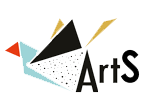When it comes to the evolution of the tech industry, one can say that mobile app development has been one of the key stanchions throughout this journey. From the initial design stage to the crucial back-end phase, the process of developing a mobile application varies from one app development platform to another.
This further resulted in the ongoing debate about ‘which mobile app development is the best?’ And in this article, we will try to provide an answer to this question by comparing two of the most popular mobile application development platforms i.e. React Native vs Flutter.
And why not? The popularity of the web, as well as mobile applications, seems to have taken off in the past couple of years. This has also contributed to the deployment of not just native mobile apps but also hybrid apps, progressive mobile apps, and of course cross-platform mobile apps.
But before we can move straight to the crucial checklist, let’s get to know about the basics of these trending mobile app development platforms.
Mobile App Development Platform: Flutter
Flutter is Google’s open-source cross-platform app development framework that mainly uses Dart as its core programming language. Both Flutter SDK (Software Development Kit) and Dart language have been created by the tech giant Google who is currently using this framework for various applications backed up by the organization itself.
Mobile App Development Platform: React Native
React Native is hands down one of the most widely known names when it comes to the field of cross-platform mobile app development. Basically, React Native is a JS (JavaScript) framework that is created by Facebook and is built upon the React library. This application development platform further allows app developers and designers to create iOS as well as Android mobile apps using a single code base.
Checklist To Pick The Right Mobile App Development Platform
- Programming Language:
Both of the mobile application development platforms use different technologies and programming languages. For instance, Flutter uses Dart while React Native framework operates on JavaScript which is also a highly adopted programming language. Although Dart is a new language, app developers and programmers are accepting it because of its low learning curve, ease of coding and advanced features.
- Tools:
We are well aware of the fact that React Native has been in the mobile app industry for quite some time now so there are a higher number of tools supporting it in comparison to Flutter which is relatively new in the market. React Native is mainly supported by a variety of IDEs (Integrated Development Environment), whereas Flutter shows compatibility with Visual Studio Code, IntelliJ Idea and Android Studio.
- Documentation:
The condition of documentation in React Native is somewhat messy, mainly because it is a heavily open sourced mobile app development platform. However, Flutter framework is offering great documentation to its end-users by closely following the organized and well-formulated documentation standards set by Google.
In addition to this, Google’s flutter is also making it easy for React Native developers to adopt its framework by offering knowledge as well as the expertise to the programmers and app developers to develop applications using Flutter.
- User Interface:
User Interface i.e. UI is one of the most crucial aspects of designing and developing a mobile application and as expected the basic foundation of user interface development varies in both of these mobile app development platforms. Flutter framework utilizes proprietary widgets like Material Design for Android platform and Cupertino for the iOS platform.
React Native faces criticism for requiring the support of third-party apps to make use of custom or personalized components, but it is also known to deliver a better experience to the end-user when working in a native OS (Operating System).
- Performance:
The next point in this checklist is what kind of app performance we can expect in cross-platform mobile app development. Here, the latter seems to lead the race by being faster than React Native framework as it eliminated the need for using the JavaScript bridge.
In order to initiate interactions with other native device components, Flutter uses its Dart bridge which speeds up the process of mobile application development along with its running time. Apart from this, the Flutter framework also supports other functionalities like fast reloading that comes in handy for bug fixing and smooth user interface prototyping.
- Scope:
Another essential point for mobile app development platform is the industry adoption i.e. how the app development platform is being accepted by different industry verticals. In the past year or two, cross-platform mobile app development has completely taken over the scene of application development.
Here are some of the companies that have adopted these mobile app development platforms:
Popular apps built using React Native – Instagram, Vogue, Wix, Pinterest, Skype, Uber, Facebook, Walmart, Bloomberg and many more.
Popular apps built using Flutter – Google AdWords, Alibaba, Hamilton Musical, Birch Finance, Tencent, AppTree, Reflectly and many more.
- Ecosystem:
As discussed above, React Native has been here before even Flutter existed, due to this majority of programmers and app developers are familiar with this cross-platform app development framework. In React Native, we have the concept of hot reloading which is similar to the feature of fast reloading in the Flutter framework.
If we talk about the ecosystems of the app development platforms, packages play a crucial role in them. For example, React Native framework has almost five times more packages than the total number of packages available for the Flutter framework. One can also say that React Native is an app development platform that has matured and Flutter still hasn’t achieved a mature status.
Final Thoughts
Now that we have gone through the essential checklist mentioned above to choose the right mobile app development platform, let’s discuss the outcome. To be very honest, there is no straightforward ‘yes or no’ answer to this question. We would suggest you keep a close eye on the latest mobile app development trends so that you can be aware of the status of these platforms in the industry.
React Native has been in the mobile app industry for years now and in comparison to it Flutter is still a newcomer that is basically testing out the water and getting to know its boundaries.
Apart from this, the selection of a cross-platform mobile app development platform also depends on the project requirements as well as the business sector. So, to make sure you choose the right mobile application development platform for your respective application development project, go through each and every point stated in the above-mentioned checklist!
Now that you have gone through all the key strengths and weaknesses of both React Native and Flutter mobile app development platforms. Which cross-platform mobile app development framework do you think is right for your business?







